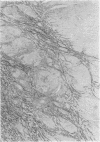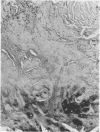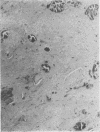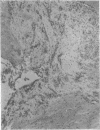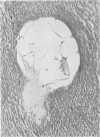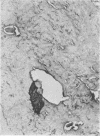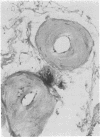Abstract
Hypertrophy of the ligamentum flavum has been reported to occur in the prolapsed intervertebral disc syndrome. The ligaments from 28 patients were compared with a necropsy control group (18). Only minor histological anomalies were noted in two patients and the ligament was not thickened in cases of disc prolapse. In addition, there was no evidence to suggest previous trauma to the ligaments associated with disc protrusion or that the elastic fibres in the ligament degenerate with age, although some degeneration of the collagen fibres had apparently occurred in the two oldest control cases.
Full text
PDF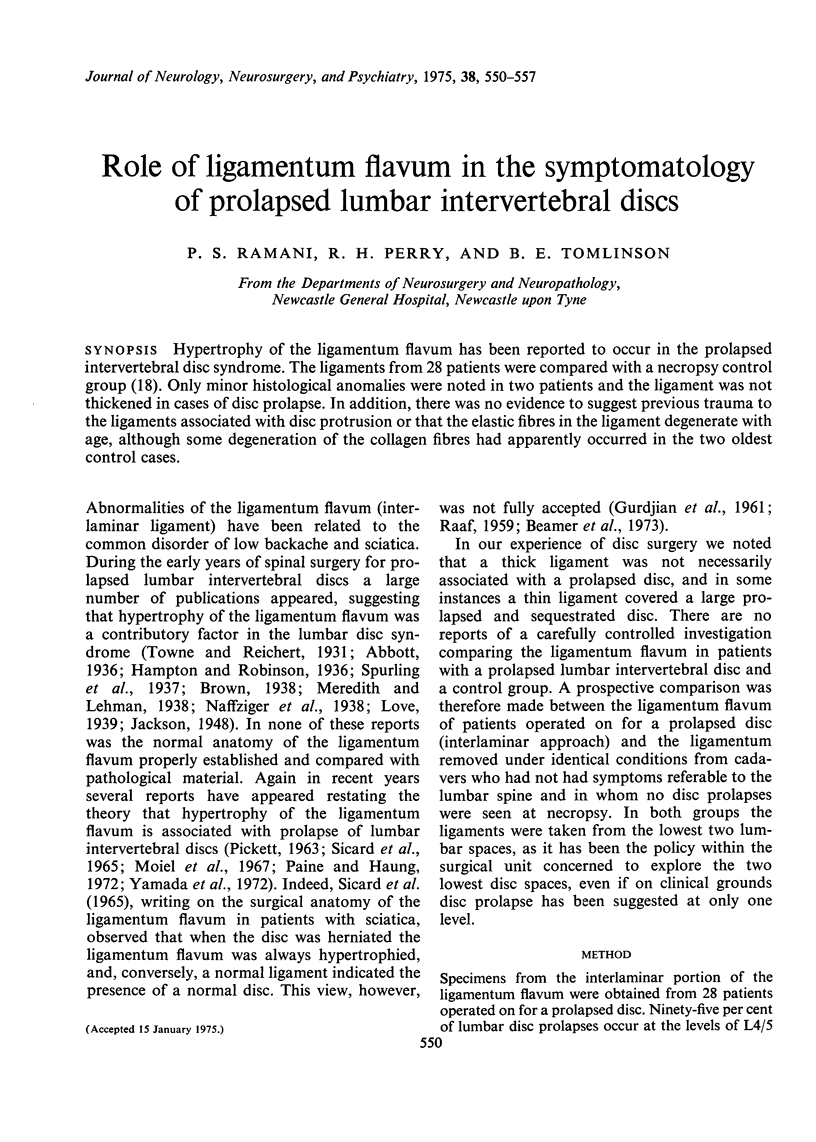







Images in this article
Selected References
These references are in PubMed. This may not be the complete list of references from this article.
- Beamer Y. B., Garner J. T., Shelden C. H. Hypertrophied ligamentum flavum. Clinical and surgical significance. Arch Surg. 1973 Mar;106(3):289–292. doi: 10.1001/archsurg.1973.01350150029008. [DOI] [PubMed] [Google Scholar]
- Evans J. H., Nachemson A. L. Biomechanical study of human lumbar ligamentum flavum. J Anat. 1969 Jul;105(Pt 1):188–189. [PubMed] [Google Scholar]
- GURDJIAN E. S., OSTROWSKI A. Z., HARDY W. G., LINDNER D. W., THOMAS L. M. Results of operative treatment of protruded and ruptured lumbar discs based on 1176 operative cases with 82 per cent follow-up of 3 to 13 years. J Neurosurg. 1961 Nov;18:783–791. doi: 10.3171/jns.1961.18.6.0783. [DOI] [PubMed] [Google Scholar]
- Moiel R. H., Ehni G., Anderson M. S. Nodule of the ligamentum flavum as a cause of nerve root compression. Case report. J Neurosurg. 1967 Nov;27(5):456–458. doi: 10.3171/jns.1967.27.5.0456. [DOI] [PubMed] [Google Scholar]
- NUNLEY R. L. The ligamenta flava of the dog. A study of tensile and physical properties. Am J Phys Med. 1958 Oct;37(5):256–268. [PubMed] [Google Scholar]
- PICKETT J. C. The lumbar ligamentum flavum in low back and sciatic pain. South Med J. 1963 Sep;56:1036–1042. doi: 10.1097/00007611-196309000-00023. [DOI] [PubMed] [Google Scholar]
- Paine K. W., Haung P. W. Lumbar disc syndrome. J Neurosurg. 1972 Jul;37(1):75–82. doi: 10.3171/jns.1972.37.1.0075. [DOI] [PubMed] [Google Scholar]
- RAAF J. Some observations regarding 905 patients operated upon for protruded lumbar intervertebral disc. Am J Surg. 1959 Apr;97(4):388–397. doi: 10.1016/0002-9610(59)90003-0. [DOI] [PubMed] [Google Scholar]
- Ramsey R. H. The anatomy of the ligamenta flava. Clin Orthop Relat Res. 1966 Jan-Feb;44:129–140. [PubMed] [Google Scholar]
- SICARD A., BATISSE F., DAHBAR H. ANATOMIE CHIRURGICALE DU LIGAMENT JAUNE ET DU DISQUE INTERVERT'EBRAL DANS LES SCIATIQUES. Presse Med. 1965 Feb 6;73:325–329. [PubMed] [Google Scholar]
- Towne E. B., Reichert F. L. Compression of the Lumbosacral Roots of the Spinal Cord by Thickened Ligamenta Flava. Ann Surg. 1931 Sep;94(3):327–336. doi: 10.1097/00000658-193109000-00002. [DOI] [PMC free article] [PubMed] [Google Scholar]
- Yamada H., Oya M., Okada T., Shiozawa Z. Intermittent cauda equina compression due to narrow spinal canal. J Neurosurg. 1972 Jul;37(1):83–88. doi: 10.3171/jns.1972.37.1.0083. [DOI] [PubMed] [Google Scholar]



